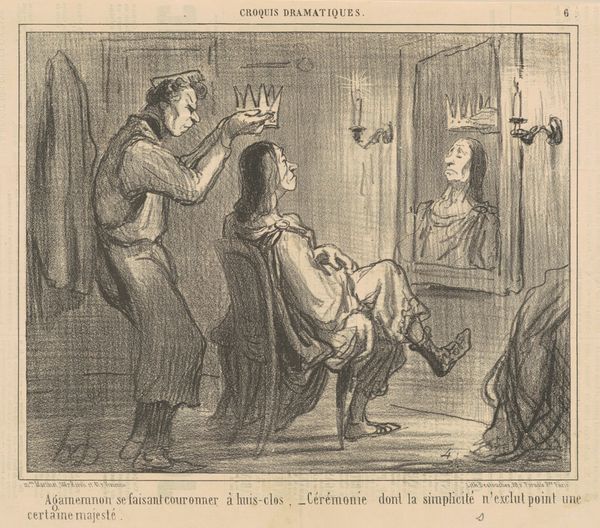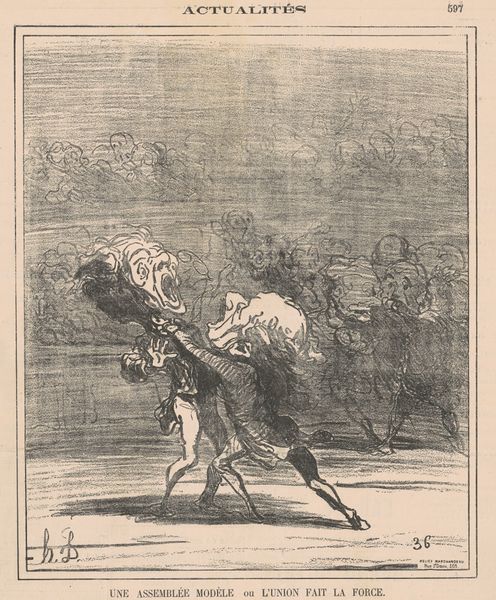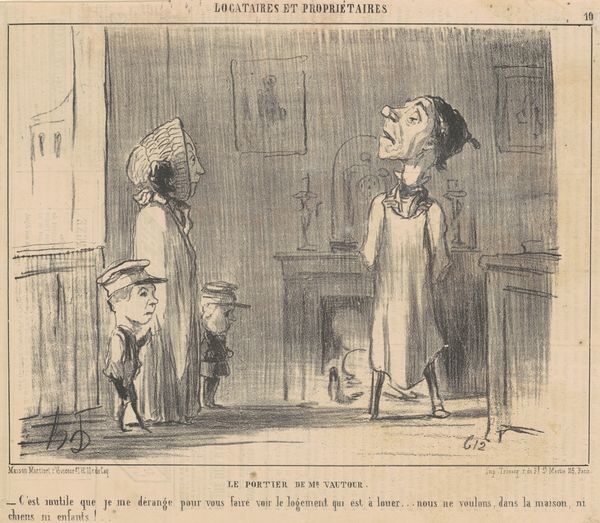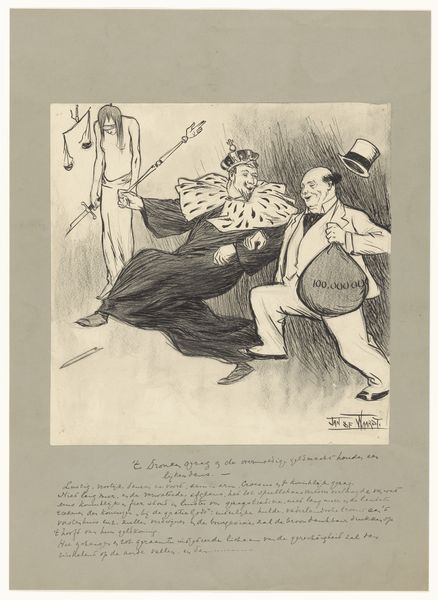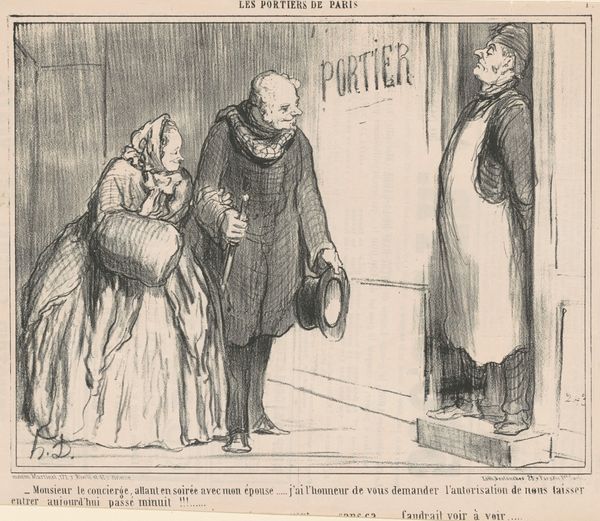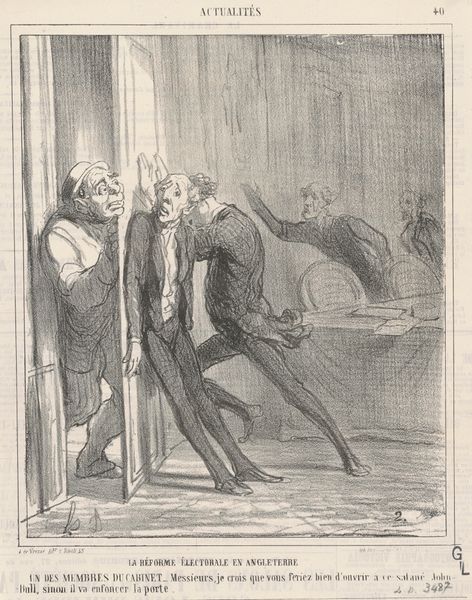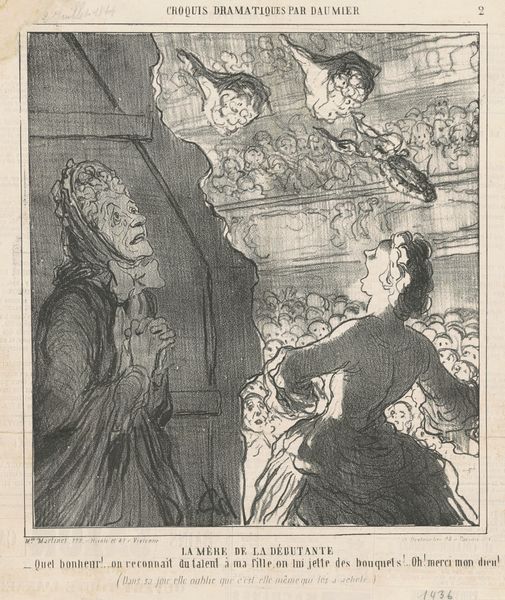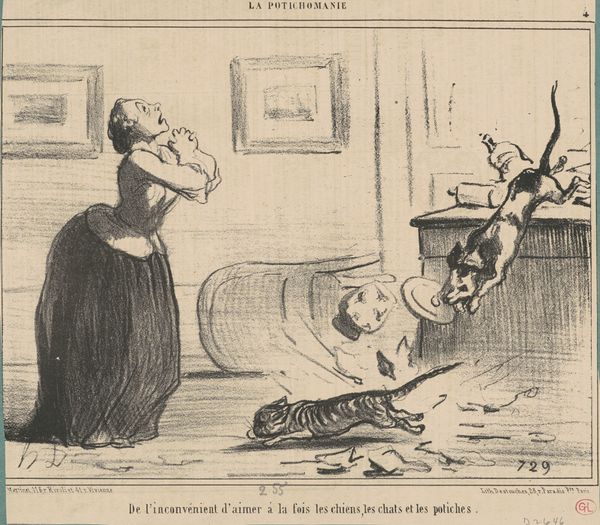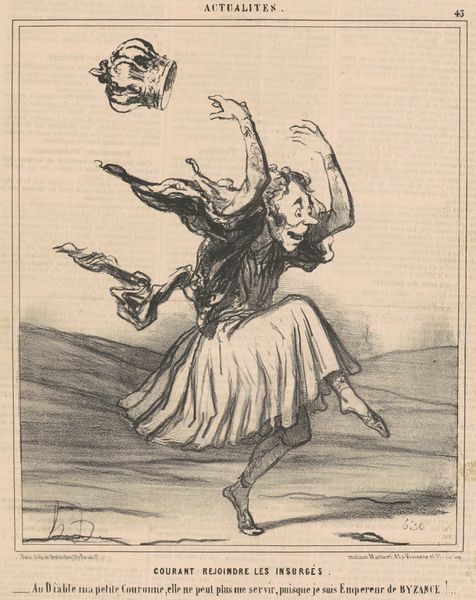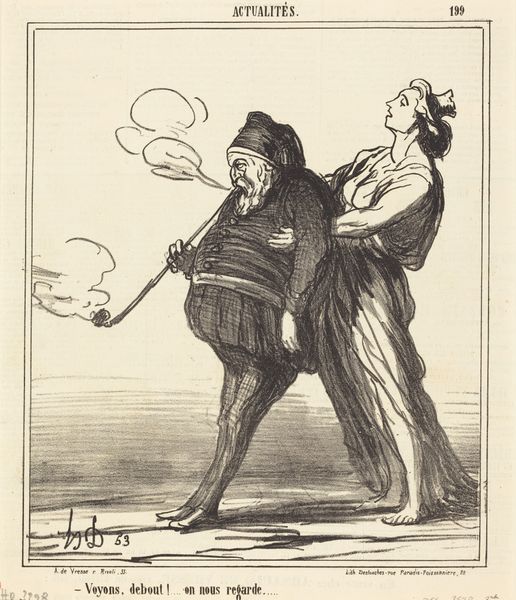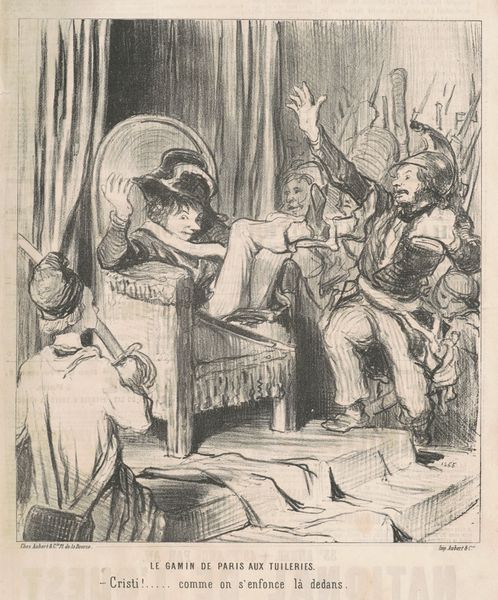
lithograph, print
#
portrait
#
lithograph
# print
#
caricature
#
romanticism
#
genre-painting
Copyright: National Gallery of Art: CC0 1.0
Editor: So this is Honoré Daumier’s "Dire que dans mon temps, moi aussi...", a lithograph from around the 19th century. The print depicts an older woman observing a dancer. The contrast between the figures is really striking, both in their forms and, I imagine, in their experiences. What stands out to you? Curator: The lithographic process itself is really telling here. Think about Daumier, painstakingly rendering these figures onto stone. Lithography allowed for relatively quick reproduction, making this image accessible to a wide audience. It democratized art, didn’t it? He's challenging those boundaries between high and low art. What do you make of the contrast in the material rendering of each figure, with one heavy and immobile, while the other, light and agile, seems to almost float above the material? Editor: That's interesting. I was so focused on the content, I didn't consider the material implications. Are you suggesting the process itself reinforces the commentary on social classes and accessibility, making the old woman's relative immobility even more striking through the comparative richness of material representation? Curator: Precisely. The relative ease of distribution provided by prints facilitated their consumption and therefore increased their cultural significance. The print becomes more than an aesthetic object; it’s a vehicle for circulating ideas and critiquing societal norms related to performance, memory and material possession. Who, after all, can afford to dance without the safety net that wealth and stable conditions provide? Editor: That's fascinating. It makes me think differently about how art is not just about what's depicted, but also about how it's made and who gets to see it. Curator: Absolutely! And how the means of production actively shapes meaning. It underscores how crucial it is to look beyond the surface and understand the processes and contexts that give artworks their true depth. Editor: I'm definitely going to pay more attention to the materials and production methods going forward. Thanks for opening my eyes to that!
Comments
No comments
Be the first to comment and join the conversation on the ultimate creative platform.

